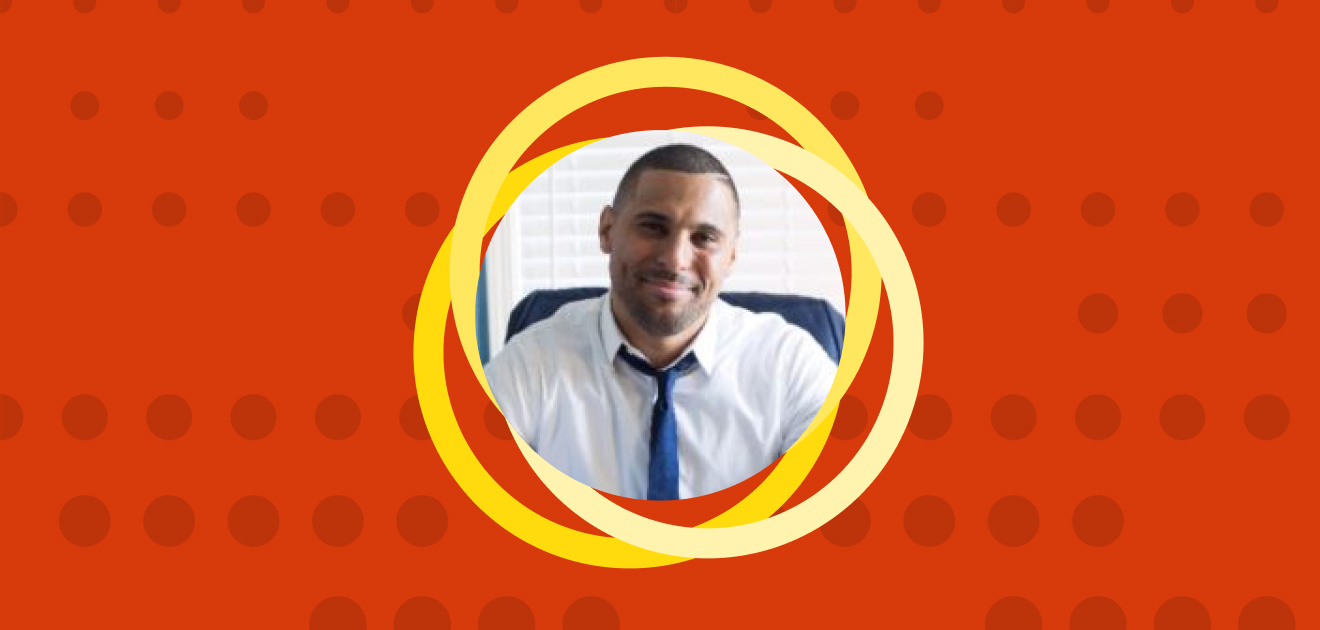
Legacy Recruiting Processes Hurt Your DEI Hiring (Here's Why & How to Fix It)
Making a meaningful impact on diversity hiring means more than adding a “we are committed…” byline to your company mission statement. Beyond setting explicit pipeline goals, confirming an inclusive employer brand, and thinking critically about whether someone from an underrepresented group would actually want to work at your company, there are the institutionalized legacy recruiting processes torpedoing your diversity hiring goals before they even hit the open waters.
Yeesh, now abandoning the hiring as sea-based warfare metaphor. This week, I brought in Hired’s DEI lead Janet Ikpa, as well as the “bad boy of recruiting,” Marvin Stickel, to discuss the above on Talk Talent to Me.
Before running recruiting at Pandora and now Coinbase, Marvin founded the first diversity hiring-focused sourcing team at Google. In an episode of the Talk Talent to Me podcast below, we discuss how “legacy” job descriptions, processes, and technical interviews are damaging the potential for diverse hiring, or candidates from underrepresented groups, and the community engagement necessary to build representative pipelines.
Related: Hired’s 2023 State of Wage Inequality report
Here are a few main points from the conversation:
- What legacy processes look like in job descriptions and impact on diversity hiring
- Why you want to be a consultative sourcer
- How to progress diversity goals
- What legacy processes look like in technical interviews
- How to ensure fairness in the hiring process
- How to source underrepresented candidates
Legacy processes and diversity hiring: job descriptions
Rob: It strikes me that sourcers in particular probably get comfortable with their various channels of outreach and with their saved search strings, the companies they know represent someone who’s a “good fit.” Are you tasked with reskilling some of these people?
Marvin: I like to use the term etch-a-sketch. For our younger viewers, it’s a toy you hold in your hand. If you made a mistake, you’d have to actually shake this toy to get a clear screen. You have to start over. That’s literally what I feel this process is going to be. We have capable senior sourcers and recruiters on this team. But there’s a huge appetite to do things the “right way.”
For me though, that comes down to good intent and, from a diversity perspective, making a concerted effort to have a blend of candidates matching the market.
I think we get comfortable hiring the same kind of people because we like what we like. What I’m looking to do at this company, as I’ve done at Google and Pandora, is make sure we’re doing the right thing for the right reasons and get everyone involved as much as possible. That’s recruiting teams, our clients, and our executive level.
…
I think job descriptions in general in the tech space and here in the valley especially, are ancient. It’s an old practice. Folks are looking for the same kind of profiles because that’s what we’ve been doing for the last ten-plus years. Really, to impact your product, we should all just be looking for smart people capable of doing XYZ.
But we’re all still really tied to X amount of years. When does this school work for this competitor? Because it’s become again sort of legacy job description creation. But, really, the companies that are going to find a way to revolutionize diversity hiring and inclusion, it’s going to start at the job description phase.
The importance of being a consultative sourcer
Rob: How do you build diverse pipelines? Does it start with blowing up this conception of what the cookie-cutter cut-out of someone who’s going to be successful in this job is? If so, how do you identify those people?
Marvin: Let’s take a step back. So the best sourcing and recruiting organizations are consultative. Sourcers typically take orders. It’s a transactional nature. “I need X amount of years or this school.” You go to your desk and try to fill that order. That’s what we do and we’ve done it for ten-plus years. You’re handcuffed to the profile-centric sourcing. To revolutionize this and be innovative, it’s going to start at that level.
Related: Need help with technical talent sourcing? Hired’s got you covered. Hired Sourcer screens and shortlists candidates for your roles, keeping you on schedule.A good consultative sourcing team or recruiting team has good market knowledge. They know what the market looks like per se. They can talk to a hiring manager or their client about the talent that’s available, the different places they come from, the different perspectives they can potentially bring to said product or group, etc. That’s consultative. And not all sourcers are built like that. It’s not their fault because sometimes we’re looking for folks who can run the engine at the top of the funnel.
But again, good intent to really change the way we hire starts there.
Progressing diversity goals
Janet: From an events perspective, I think you have to assess your company’s brand when it comes to recruitment. I definitely worked at companies where they thought, “Our brand is so hot and all the underrepresented folks are going to want to work for us.” It was not true. The reality is the company never targeted these groups of people, marketed toward them, or tried to understand their pains and why working at the company could address that.
Or the company has not gone to the spaces where these people are present. This includes conferences and events like the National Society of Black Engineers and the Society of Hispanic Professional Engineers Conference.
Marvin: We talked about job descriptions and how there’s a lot of room for improvement. Interesting fact: one of the engineers we hired when I was at Google, their big complaint as they went through the process was, “I was told this was going to be my job. I was interviewing for this job and they asked me questions aligned with the role I thought I’d be doing. They started working there and had zero resemblance to what they actually did day-to-day.”
We create these “hiring bars,” which is a phrase I cannot stand. We set people up to fail from that level. So from the job description, they fail. The interview process a lot of times, fails. We’re assessing these candidates versus those questions, which don’t necessarily relate to what their day-to-day work is going to be.
It’s a bad candidate experience too. Let’s say you go through the entire process and you’re able to get a job at the company. Now you’re doing work you didn’t want to do.
Consult your team members
I want to go back to the consultative piece. A tool you have when working with engineers is you’re talking to these folks. You’re asking them what their experience was. It’s not just talking to folks in the market and getting a sense of what your candidates are feeling as they are going through your process, but talking to the people working in your company.
This is why someone like Janet is so powerful because while I’m out here talking to people who aren’t necessarily working at Hired yet, Janet has access and is working constantly with folks at Hired who can give you a sense of their experience at any level. Those are things I think are really powerful when you’re thinking about change. A candidate complaining about the process is very different than an engineer saying, “It was a really terrible experience, but I work here.”
Legacy processes and diversity hiring: technical interviewing
Janet: I think speed of coding is having us miss a lot of great candidates. You are interviewing for twenty minutes to answer a question people are saying in theory, you should be able to answer in twenty minutes. But what if it takes you twenty-five? Then you get dinged for it. You usually don’t have time to ask them questions or somebody is just staring at you and not really following up with questions or giving you insight into things you might be missing. I think many companies need to just look holistically at their process and if they are unintentionally amplifying bias.
Rob: And exactly like the job descriptions, you are creating a process to does not represent the day-to-day experience of an employee.
Janet: We had an engineering interview replicating a game. Unfortunately, if you were a man from the US, you were most likely going to understand how to solve this engineering problem.
Many women and those who were not from the US had to take ten minutes to understand the problem. This cut into their interviewing time. Once again, speed to answer did not do them any favors because they had to spend so much time getting context. Our head of engineering called it out immediately and now we’ve changed the interview to provide three different questions. It’s all still checking the same skills and thought pattern but it now allows for us to meet the cultural differences.
Rob: That speaks to the legacy issue. That specific question was written by an engineer who probably thought he was being really creative. It wasn’t malicious but it was unconscious.
The importance of taking a critical approach
Marvin: I think none of us at these companies should be as arrogant as we are about our interview processes. I think it’s important to be critical all the time. There’s as much as quarterly about the folks you’re missing. Every time Google doesn’t hire someone, Facebook does. They’re good enough for one company and not the other. You should be looking at why they’re successful and you missed them.
Stuff like that happens at every level, at every company, every single day. Critically looking at your own process, even if it’s a humbling experience, should always be done. Because we’re all messing it up.
If you’re looking for talent, there are a lot of other ways to assess that. You handcuff yourself to a very specific profile created by let’s face it – some Stanford grads from 2003. Every other company has something like that. Whatever your VP of Engineering likes, you’re creating a profile around that. That’s your interview process. You’re going to hire a lot of the same kinds of people.
Rob: I don’t want to let people off the hook by saying it doesn’t come from a malicious place. But it comes down to empathy.
Marvin: In the spirit of not letting someone off the hook, if you’re not able again to have a humble perspective on how you could be doing things differently or better, it is your responsibility. In this case, with Janet’s example, if she’s able to gather this data, bring this and folks are still not willing to change their interview process. Well, at that point, you are on the hook. You can’t blame someone for not knowing like anything else. But once they know, what are we doing?
Ensuring fairness in the process
Marvin: In regard to making sure that folks are getting the absolute best candidate experience regardless of background and perspective, you really do have to leverage your executive level, your marketing team, and everything else because. I’ll use Pandora as an example. They’re incredible about wearing their flaws. That way, the entire company is accountable.
Just knowing implicitly, you’re more apt to make sure everyone gets a fair shake as they go through the process. Not a better shake. You’re not lowering the bar, which again drives me crazy, but you understand you’re going to see diverse perspectives throughout the entire process. Henceforth, you’re going to interview with a different lens. You’re not just going to immediately reject someone because they didn’t go to MIT, and that’s what you like. You just need folks to have a different lens as they’re looking at folks, as they’re going through the process.
Now that’s a behavioral thing. Janet and I were talking offline right before we started about how hard it is, just anthropologically, to change someone’s behavior.
The three schools of thought
Marvin: There are really three schools of thought as far as I’m concerned, especially at this point in the process. You have our group – social justice, this is the right thing to do, good intent. We know our company is better if we’re more diverse and have more perspectives.
The second group thinks if it’s good for the product, I don’t care. Get people in here. These are the engineering managers saying, “If I saw more Hispanic folks, I’d hire them.” They don’t really have a take but just want you to do your job.
Then you have this third group. Unfortunately, they don’t understand why this is important. In fact, they wonder if we’re wasting time not hiring the best people “because we’re focusing on diversity programs.”
The time I’d have to spend trying to convince folks in the third group to understand what we’re trying to accomplish means I’m really hurting what we could be doing at the top of the funnel in doubling down on just making sure we have diverse perspectives, etc. I’m at a point where I’m all the way on the production side. I’ll work really really hard with those first two groups. I’m going to do everything I can to make sure that even the third group is seeing a great blend of candidates and hoping that math works out. If it doesn’t, I have data I could present to the third group.
Sourcing underrepresented candidates
Marvin: Get involved with the community. Understand the demographics and create an inclusionary environment at your company so folks want to work there. In order to find these people, you really have to get out there, dive deep into communities, and get comfortable.
Work with those folks so you’re setting them up for success. The Google example I use all the time is: they have their hiring bar and look for a very specific kind of profile, and there are two schools of thought there.
You can try to set underrepresented minorities up so they prepare a very specific way to meet that bar. You can take the most talented people out of all of these communities and try to get Google to understand these are incredibly talented people. What do we have to do for you to be able to see this is a direct impact on our product, on our user base, etc.? The answer is probably somewhere in between, especially at scale.
Janet: It’s as simple as having people who are representative of the different diverse lifestyles and spectrums on your website and coming out to your campus communities or hosting these events in tandem with managers. I understand there’s a disproportionate amount of expectation for these people to do that. Thus, I highly recommend they are recognized, rewarded, and promoted for their work. It’s important to hire these individuals and get this perspective. You need to ensure those who are underrepresented are out there talking about their experience. Pay it forward, pay it backward.
The secret to combatting legacy processes and improving diversity hiring
Marvin: The dirty secret of diversity – call it – hiring is there has to be a concerted effort. When you talk about caring, it only happens when you double down on the actual efforts you’re going to put into something like that. You’re not going to wake up and have a diverse pipeline. We know that doesn’t happen. We know there has to be executive buy-in, hiring manager buy-in, and interview buy-in. Folks have to really understand what you’re trying to accomplish. Everyone has to put their chips on the table and not change the bar, not look to do anything different outside of accepting different perspectives because they make your product better.
Want more insights into recruiting tips and trends?
Tune into Hired’s podcast, Talk Talent to Me, to learn about the strategies, techniques, and trends shaping the recruitment industry—straight from top experts themselves.
Looking to hire top tech and sales talent? Get a demo customized for your business.Originally published November 2017. Revised by the Hired Content Team July 2023.
Related blog posts

ChatGPT in Recruitment: How to Unlock its Power & Increase Efficiency
Curious about how to use ChatGPT in recruitment? To dive into game-changing sourcing and recruiting...

Diversity & Inclusion Recruitment, Retaining Talent, & More: Talk Talent to Me March ’23 Recap
Catch up on the March 2023 episodes of Hired’s Talk Talent to Me podcast featuring recruiting...

7 Ways to Message UVPs to Tech Candidates Now: Recruitment Marketing in 2023
What You’ll Learn Why it’s not about hyper-growth anymore How to be...

How to Foster Psychological Safety in the Workplace, from Interviews to Management
Why it’s Important to Create an Environment for Employees and Candidates that Welcomes...

10 Things You Can Do to Reach DEI Goals
What You’ll Learn The first thing you must do to make meaningful progress on DEI...

Awareness to Action: How to Build a Fair and Inclusive Hiring Process (VIDEO)
How do you eliminate bias from the recruitment process? Watch this on-demand webinar to hear...


